
The Honourable Society of the Middle Temple, commonly known simply as Middle Temple, is one of the four Inns of Court exclusively entitled to call their members to the English Bar as barristers, the others being the Inner Temple, Gray's Inn and Lincoln's Inn. It is located in the wider Temple area of London, near the Royal Courts of Justice, and within the City of London. As a liberty, it functions largely as an independent local government authority.

The Honourable Society of Lincoln's Inn is one of the four Inns of Court in London to which barristers of England and Wales belong and where they are called to the Bar. Lincoln's Inn, along with the three other Inns of Court, is recognised as being one of the world's most prestigious professional bodies of judges and lawyers.
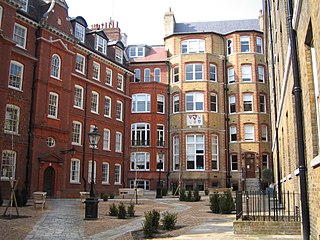
The Honourable Society of the Inner Temple, commonly known as the Inner Temple, is one of the four Inns of Court and is a professional association for barristers and judges. To be called to the Bar and practise as a barrister in England and Wales, a person must belong to one of these Inns. It is located in the wider Temple area, near the Royal Courts of Justice, and within the City of London. As a liberty, it functions largely as an independent local government authority.
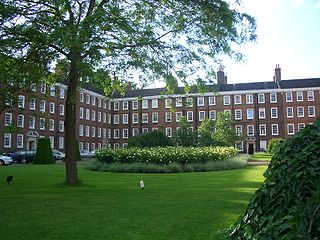
The Honourable Society of Gray's Inn, commonly known as Gray's Inn, is one of the four Inns of Court in London. To be called to the bar in order to practise as a barrister in England and Wales, an individual must belong to one of these inns. Located at the intersection of High Holborn and Gray's Inn Road in Central London, the Inn is a professional body and provides office and some residential accommodation for barristers. It is ruled by a governing council called "Pension", made up of the Masters of the Bench and led by the Treasurer, who is elected to serve a one-year term. The Inn is known for its gardens, which have existed since at least 1597.

Fleet Street is a major street mostly in the City of London, England. It runs west to east from Temple Bar at the boundary with the City of Westminster to Ludgate Circus at the site of the London Wall and the River Fleet from which the street was named.

The Inns of Court in London are the professional associations for barristers in England and Wales. There are four Inns of Court: Gray's Inn, Lincoln's Inn, Inner Temple and Middle Temple.
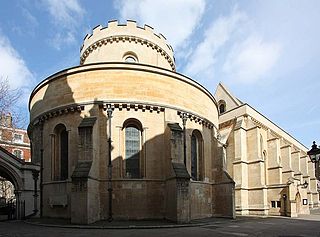
The Temple Church, a royal peculiar in the Church of England, is a church in the City of London located between Fleet Street and the River Thames, built by the Knights Templar for their English headquarters in the Temple precinct. It was consecrated on 10 February 1185 by Patriarch Heraclius of Jerusalem. During the reign of King John (1199–1216) it served as the royal treasury, supported by the role of the Knights Templar as proto-international bankers. It is now jointly owned by the Inner Temple and Middle Temple Inns of Court, bases of the English legal profession. It is famous for being a round church, a common design feature for Knights Templar churches, and for its 13th- and 14th-century stone effigies. It was heavily damaged by German bombing during World War II and has since been greatly restored and rebuilt.

The Temple is an area of the City of London surrounding Temple Church. It is one of the main legal districts in London and a notable centre for English law, since the middle ages to the present day. It consists of the Inner Temple and the Middle Temple, which are two of the four Inns of Court and act as local authorities in place of the City of London Corporation as to almost all structures and functions. Before the establishment of these Inns of Court, the Temple area was the precinct given to the Knights Templar until they were suppressed in 1312, but the area has retained the name from that time. It became a centre of the legal profession soon thereafter.
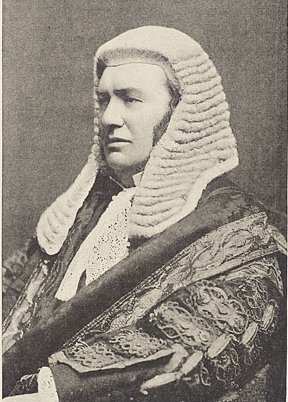
A Serjeant-at-Law (SL), commonly known simply as a Serjeant, was a member of an order of barristers at the English and Irish Bar. The position of Serjeant-at-Law, or Sergeant-Counter, was centuries old; there are writs dating to 1300 which identify them as descended from figures in France before the Norman Conquest, thus the Serjeants are said to be the oldest formally created order in England. The order rose during the 16th century as a small, elite group of lawyers who took much of the work in the central common law courts.

The Inns of Chancery or Hospida Cancellarie were a group of buildings and legal institutions in London initially attached to the Inns of Court and used as offices for the clerks of chancery, from which they drew their name. Existing from at least 1344, the Inns gradually changed their purpose, and became both the offices and accommodation for solicitors and a place of initial training for barristers.

Serjeant's Inn was the legal inn of the Serjeants-at-Law in London. Originally there were two separate societies of Serjeants-at-law: the Fleet Street inn dated from 1443 and the Chancery Lane inn dated from 1416. In 1730, the Fleet Street lease was not renewed and the two societies merged. The society's relevance diminished as Serjeants-at-Law were gradually superseded by Queen's Counsel in the nineteenth century. The building in Chancery Lane was sold in 1877 and the assets were distributed amongst the surviving members, although the society was not formally dissolved. The last member, Lord Lindley, died in 1921. The Fleet Street building was destroyed in the 1941 bombing raids during World War II.
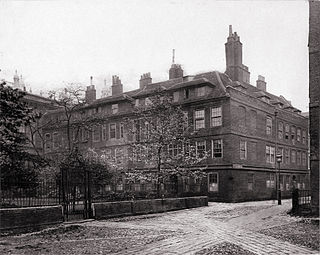
Clifford's Inn is a former Inn of Chancery in London. It was located between Fetter Lane, Clifford's Inn Passage, leading off Fleet Street and Chancery Lane in the City of London. The Inn was founded in 1344 and refounded 15 June 1668. It was dissolved in 1903, and most of its original structure was demolished in 1934. It was both the first Inn of Chancery to be founded and the last to be demolished.

Paper Buildings are a set of chambers located in the Inner Temple in Temple, London. They were initially constructed in 1609. Paper Buildings appear in A Tale of Two Cities and Barnaby Rudge.
Lyon's Inn was one of the Inns of Chancery attached to London's Inner Temple. Founded some time during or before the reign of Henry V, the Inn educated lawyers including Edward Coke and John Selden, although it was never one of the larger Inns. It eventually developed into an institution of disrepute rather than of respect, and by the time it was dissolved in 1863 it was inhabited by only the worst lawyers.

Stone Buildings, Lincoln's Inn were constructed from 1774 to 1780. The architect was Sir Robert Taylor. Stone Buildings is a Grade I listed building. Stone Buildings appear in Anthony Trollope's novel The Prime Minister.

Pump Court is a courtyard in Temple, London, now primarily housing barristers' chambers. It is the first on the left in Middle Temple Lane from 6 Fleet Street, leading to Inner Temple Lane and Lamb's Buildings. Its name referred to the pump in the middle.

King's Bench Walk is a street in Temple, in the City of London. It is mainly made up of barristers' chambers.
William Whateley was an English barrister. He was noted as a supporter of the Conservative Party and the Church of England.
The Royal Commission on the Inns of Court carried out an investigation into the Inns of Court and associated Inns of Chancery between 1854 and 1855. The inns were medieval guild-like institutions that provided accommodation for lawyers and had developed gradually into centres for legal education. All barristers in the country had to be a member of one of the inns. It included many of the leading lawyers and jurists of the time. The commission found many of the inns, particularly the Inns of Chancery, were ineffective at educating students and recommended the creation of a single university of law. Steps were taken to accomplish this and a parliamentary bill was prepared but it was never achieved. The commission did, however, have an influence on legal education for decades and was a factor in the establishment of modern law schools at the universities of Cambridge, Oxford and London.
The New Inn was one of the Inns of Chancery or Hospida Cancellarie. It existed from the late 15th century until 1902 and was located near Aldwych in London.


















